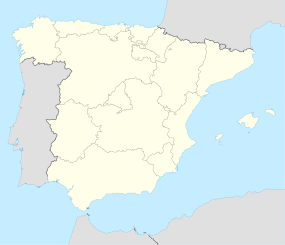Italica

The Roman amphitheatre at Italica seated 25,000
|
|
| Location | Province of Seville, Spain |
|---|---|
| Region | Hispania Baetica |
| Coordinates | 37°26′38″N 6°02′48″W / 37.44389°N 6.04667°WCoordinates: 37°26′38″N 6°02′48″W / 37.44389°N 6.04667°W |
| Type | Settlement |
| History | |
| Builder | Publius Cornelius Scipio |
| Founded | 206 BC |
| Cultures | Roman |
| Site notes | |
| Condition | In ruins |
Italica (Spanish: Itálica; north of modern-day Santiponce, 9 km NW of Seville, Spain) is a well-preserved Roman city and the birthplace of Roman Emperors Trajan and Hadrian.
The modern town of Santiponce overlies part of the pre-Roman Iberian settlement and the Roman city.
Italica was founded in 206 BC by the great Roman general Publius Cornelius Scipio (later given the nickname Africanus) to settle his victorious veterans from the Second Punic Wars against Hannibal and the Carthaginians, and close enough to the Guadalquivir to control the area. The name Italica reflected the veterans' Italian origins.
The "old town" or urbs vetus dating from the Republican period lies under the present town of Santiponce.
The nearby native and Roman city of Hispalis (Seville) would always remain a larger city, but Italica became an important centre of Roman culture. Italica was later the birthplace of the Roman emperors Trajan and Hadrian (and possibly Theodosius I), and thrived especially under the patronage of Hadrian. He expanded the city northwards as the urbs nova or "new city" and elevated it to the status of colonia as Colonia Aelia Augusta Italica upon its request, even though Hadrian expressed his surprise as it already enjoyed the rights of "Municipium". He also added temples, including a Trajaneum venerating Trajan, and rebuilt public buildings.
Italica’s amphitheatre was the third largest in the Roman Empire at the time, being only slightly larger than the Tours Amphitheatre in France. It seated 25,000 spectators, about half as many as the Colosseum in Rome. The size is surprising given that the city's population at the time is estimated to have been only 8,000, and shows that the local elite demonstrated status that extended far beyond Italica itself through the games and theatrical performances they funded as magistrates and public officials. In the same period a new elite quarter was built in the city, with several beautiful (and expensive) houses decorated with splendid mosaics, which are still visible today.
...
Wikipedia

